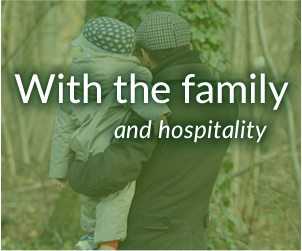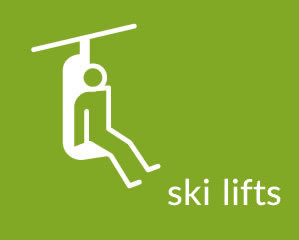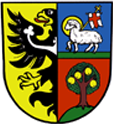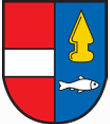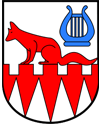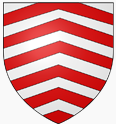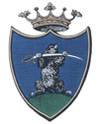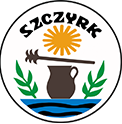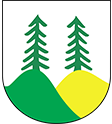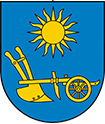General Information
Wisła is one of the most beautiful towns in the Cieszyn County. It is very close to the Czech Republic and not far from Slovakia.
Wisła is a mountain town in the Beskid Mountains. Its lowest part is a valley of the Vistula River called Obłaziec at the entrance to the town (392 meters a.s.l.) and the highest one is the top of Mount Barania (1220 meters a.s.l.) The centre of the town is on the height of 430 meters above the sea level. The whole town consists of seven valleys: Jawornik, Głębce, Nowa Osada, Malinka, Czarne, Łabajów and Dziechcinka.
Wisła lies at the sources of the longest Polish river the Vistula. Two streams flow down the slopes of Mount Barania: the Black and the White Vistula and a little further in the valley of Malinka they make up the main Vistula river.
In the years 1967 – 1973 a dam was built on Lake Czerniańskie which serves as a water reservoir and a flood protection. Its total capacity is 5.06 million cubic meters and it has an area of about 40 hectares.
The native inhabitants of Wisła are Silesian highlanders. At present there are 11,290 inhabitants - 5,359 men and 5,393 women. The town is characterized by a very strong inclusiveness of the old families which can be seen in the fact that there are large groups of people in Wisła who have the same family names, for example:
- 960 people named Cieślar (8.6 %)
- 709 people named Pilch (6.4 %)
- 397 people name Bujok (3.5 %)
- 313 people named Czyż (2.8 %)
- 335 people named Szalbot or Szalbót (3.0 %)
Wisła is also a very unique town in Poland as far as religion is concerned. Until the end of the XIX century the town was inhabited almost only by the Lutheran Protestants. Nowadays there are 13 different churches and religious associations, 50 % of them are Protestant, 30 % Roman Catholic and the rest are less popular confessions such as Jehovah’s Witnesses, Baptists, Pentecostals and Adventists. Altogether there are 5 Protestant churches, 5 Catholic churches and 4 churches of other confessions.
There are 5 elementary schools, 1 secondary school, 1 high comprehensive school, 1 high school of hotel management and a music school (first level).
The whole town consists of the central part and several valleys around it. The total area of the town is 11,091 hectares (110.9 square kilometers):
- Forest area -74.4 %
- Farmland – 18.9 %
- Built up area – 2.6 % (I level)
A great number of houses and holiday cottages are situated away from the centre of the town along the valleys of: Malinka, Czarne, Gościejów, Partecznik, Głębce, Łabajów, Dziechcinka and Jaworni. A town which lies not in one location but in a number of valleys is a very unique one not only in the Beskid Mountains but also in comparison to other tourist resorts in Poland. It is enough to make a few steps away from the centre to find some peace and quiet in any of the valleys around it. All of them are surrounded by forests, meadows, gentle mountain slopes and streams. There are plenty of tourist routes to choose from and hundreds of charming places well worth visiting.
The history of Wisła as a tourist resort goes back to the XIX century. Its location, climate and the beauty of its landscape have been encouraging people to come here all the year round. There are more than 100 kilometers of tourist walking and cycling routes of different levels of difficulty waiting for the tourists. In winter more than 20 ski lifts (6 of them are ski chair lifts) expect the fans of skiing who decide to come to our town. Most of the ski slopes are illuminated , artificially snowed in case of not enough snow and professionally prepared with the use of snow equalizers. There are also six ski jumping hills and two special cross country skiing areas of the Sport Club Jonidło and of Polish Ski Association in Kubalonka where you can run along professionally prepared tracks. When there is enough snow cross country is also possible along the Vistula river or in the valleys of White and Black Vistula. A new kind of skiing – skiturs (a combination of classical skis aand cross country skis) is slowly gaining popularity.
In the summer the banks of the Vistula river is crowded with people, especially at weekends. There are also several outdoor and indoor swimming pools open for the tourists at some hotels and boarding houses. For the more active ones there are several tennis courts and playgrounds (at the Sport Club in Jonidło or at the Sport Club ‘Start’).
Wisła has a very rich accommodation offer: hotels, guesthouses, boarding houses, agritourism and private accommodation. Altogether there are about 12 thousand beds in more than 400 locations.
The town has a very good direct connections with several other towns and cities: Bielsko – Biała, Katowice, Kraków, Opole, Lublin, Warszawa and Kołobrzeg for example. There are also two train stations in the town: Wisła Uzdrowisko and Wisła Głębce and three train stops. The railway line to Wisła Głębce is especially worth seeing because of the two beautiful railway viaducts built in the 30s of the XIX century over the valleys of Dziechcinka and Łabajów. The local bus transport is well developed and the three airports of Pyrzowice, Balice and Ostrava (in the Czech Republic) which are not very far from Wisła make it possible to fly here from some further locations.

